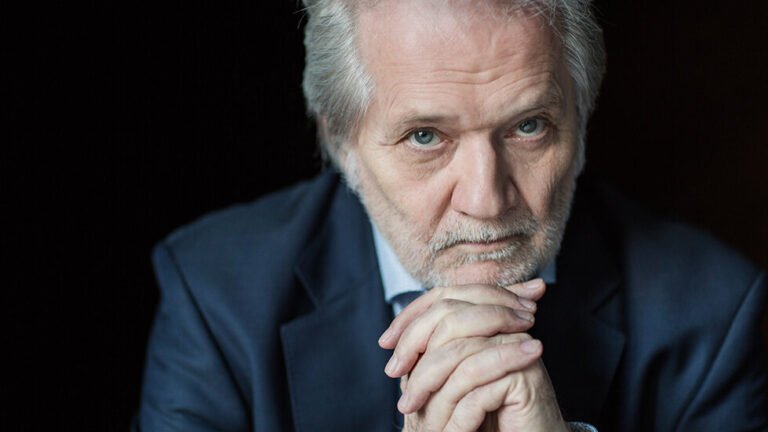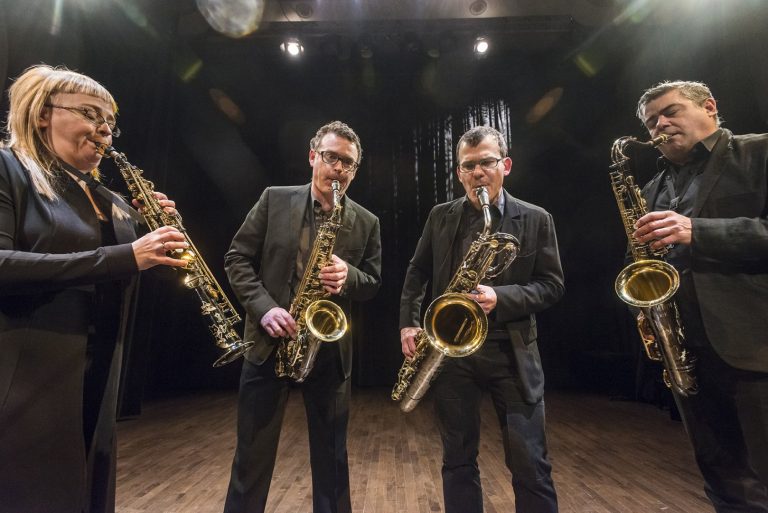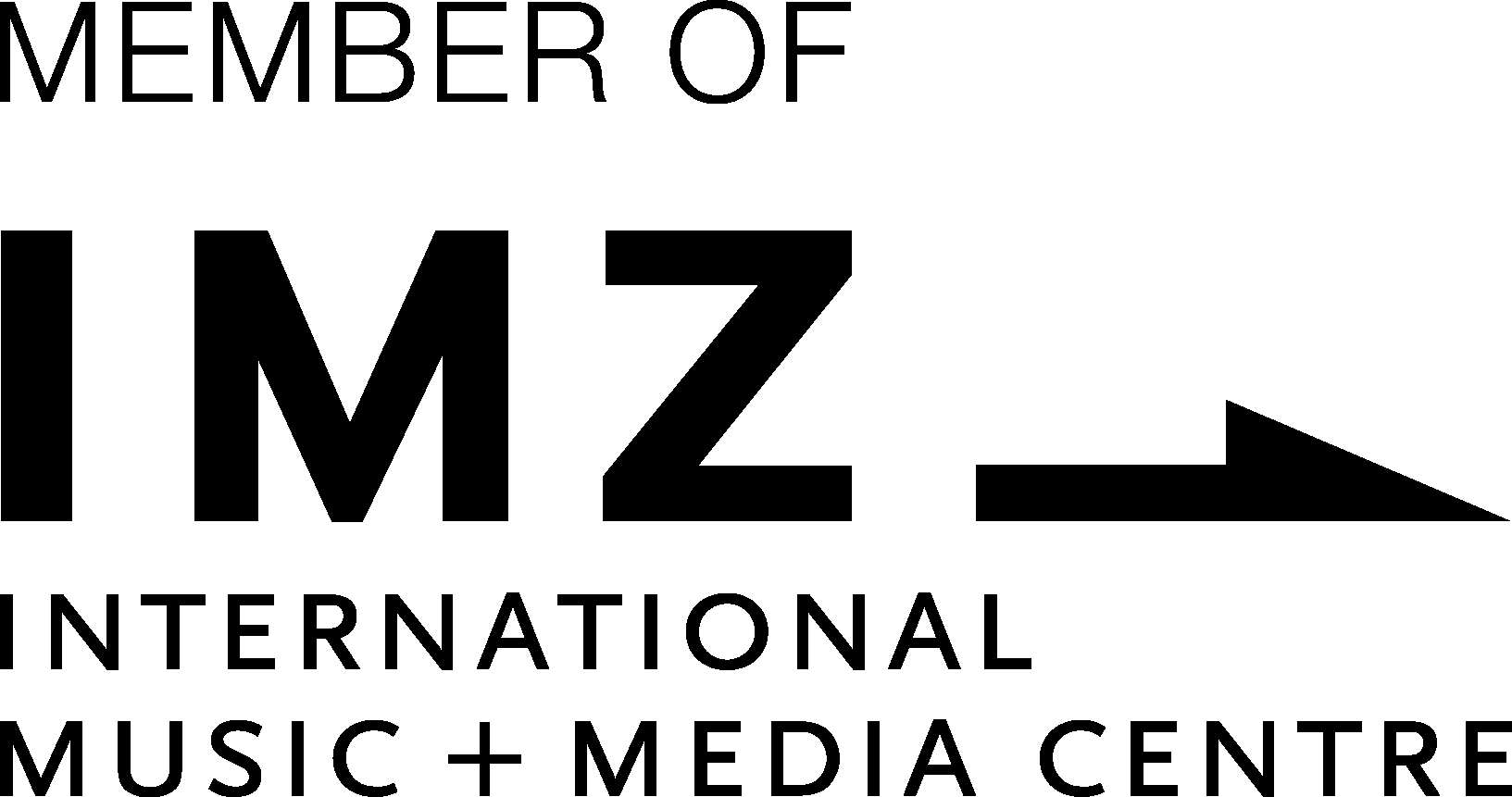On May 28, the second concert in the Sonus Foundation’s ÚjLélekZene series will take place at the Budavári Lutheran Church. The series organizes each concert’s program around four symbols – light, levitation, reach, and silence. The concert titled „Levitation” will feature the Canadian Quasar Saxophone Quartet. The concert is dedicated to the memory of Péter Eötvös, and his work Lectures différentes will also be performed. On the occasion of the quartet’s first performance in Hungary, I had the opportunity to talk with two members of the quartet, artistic director Marie-Chantal Leclair and operations director Jean-Marc Bouchard, about contemporary music, the saxophone quartet, and their concert in Budapest.
– How long have you been playing together? What led to the formation of the ensemble?
– Marie-Chantal Leclair: We founded the Quasar Saxophone Quartet in 1994. All four of us attended the University of Montréal, where we often played together. As we started our careers, we decided to continue this collaboration. That’s how we founded our saxophone quartet, and the artistic goals we set back then have remained unchanged.
– Jean-Marc Bouchard: Not only have our artistic goals remained the same, but the ensemble’s composition has also stayed unchanged. The quartet still consists of the same four people as when we founded it.
– How did you formulate your artistic goals?
– MCL: Even at the beginning of our careers, we dreamed of contributing to the contemporary music scene and expanding the repertoire. At our very first concert, we already premiered four new compositions.
– JMB: Introducing new works has always been an important mission for us, and we gladly participate in experimental projects where electronics, improvisation, or even video materials play a role.
– MCL: We also teach and hold workshops. The day before the concert in Budapest, we will conduct a masterclass organized by the Sonus Foundation and the Liszt Academy of Music, with the help of Professor Erzsébet Seleljo.

– What was the contemporary music scene like in 1994 when the ensemble was founded, and has it changed since then?
– JMB: Even in 1994, there was an active contemporary music scene in Montréal where our ensemble found its place. Naturally, the contemporary music scene is continuously evolving and changing. Today, it does not look the same as in the ’90s, but we are pleased to see that we are part of a constantly changing, vibrant, and active community.
– MCL: An important participant in the Montréal contemporary music scene is the Le Vivier organization, of which we are also members. Le Vivier supports all kinds of new music endeavors and actively shapes the city’s musical life. We see that the contemporary music scene is flourishing in many other major cities as well – perhaps most notably in France and Germany in Europe. In Montréal, there may not be as much interest as in other – larger – cities, but we find that there is an enthusiastic audience that actively participates in our concerts and follows our activities with great interest.
– JMB: To our great delight, people of all ages are represented in our audience.
– You mentioned that an important goal of the ensemble is to support the creation of new musical works. How can you contribute to this?
– MCL: Besides playing many contemporary musical works, we often commission composers to write pieces, and then we work with them. This practical approach is very useful because the composer receives feedback directly from us, the performers. Additionally, they have the opportunity to „experiment” with sounds or musical solutions live, with the help of the quartet. It’s like a scientist in a laboratory…
– JMB: We find that these collaborations are very effective. Without this, composing music can remain very abstract, but this way, a lively dialogue develops between the musician and the composer.
– Does the contemporary music repertoire stem from the „youth” of the saxophone as an instrument?
– JMB: Since the saxophone is a relatively new instrument in the history of music literature, there are fewer opportunities to play the classical repertoire, as we would only be able to play it in transcriptions. However, our ensemble, for example, does not play transcriptions. We believe it’s not worth trying to imitate other instruments. We wouldn’t expect a string quartet to sound like a saxophone quartet. Moreover, the repertoire is continuously expanding, and this formation is quite popular nowadays; you can find saxophone quartets in most major cities.
– MCL: Another positive aspect is that the „young” instrument is not burdened by a centuries-old repertoire, so we can approach what we play more freely.

– What program are you preparing for the „Levitation” concert on May 28?
– MCL: We tried to select a program that fits the theme of the ÚjLélekZene series and the church space, as well as the meditative-spiritual theme. For example, it includes Péter Dániel Bíró’s Udvarim Achadim, which deals with the story of the Tower of Babel, and Claude Vivier’s Paula Dewata, which is a tribute to Balinese culture.
– JMB: It’s also worth mentioning Analia Llugdar’s Cathédrale-Lumière, which deals with the spatial representation of sound and was specifically intended for a church space by the composer. This piece will be special because we performers will be positioned at different points in the space. Émilie Girard-Charest’s Bestiaire might differ slightly from the other pieces, but it is an extremely interesting work that depicts the animal world and nature. An exciting and interesting musical world will come to life; at first listen, one might not even guess that saxophones are playing.
– MCL: We are also delighted to be able to perform works by several female composers. Additionally, we wanted to include pieces by Hungarian composers, so we will be performing Ajtony Csaba’s Gossamer, and we will conclude the concert with the recently deceased Péter Eötvös’s Lectures différentes, dedicating the concert to his memory.
The ÚjLélekZene series’ „Levitation” concert will take place on May 28, 2024, at 7:00 PM at the Lutheran Church in Bécsi Kapu Square.











